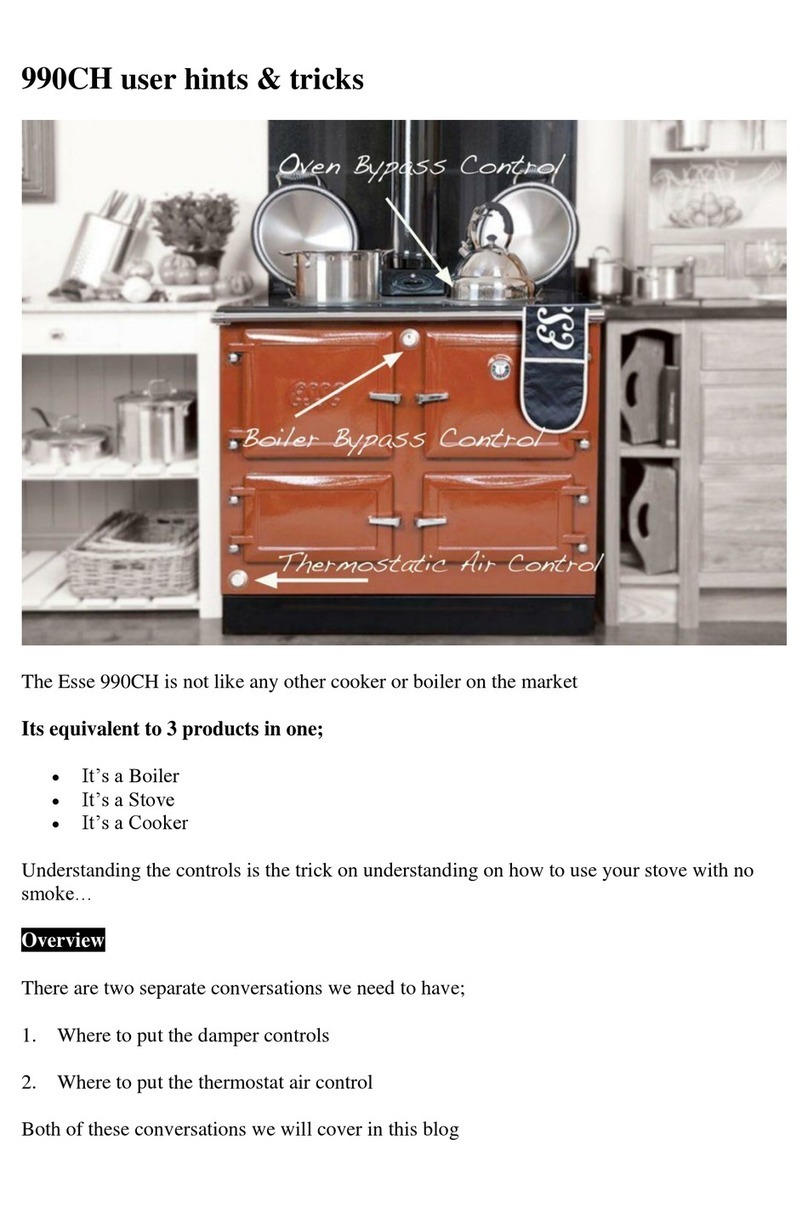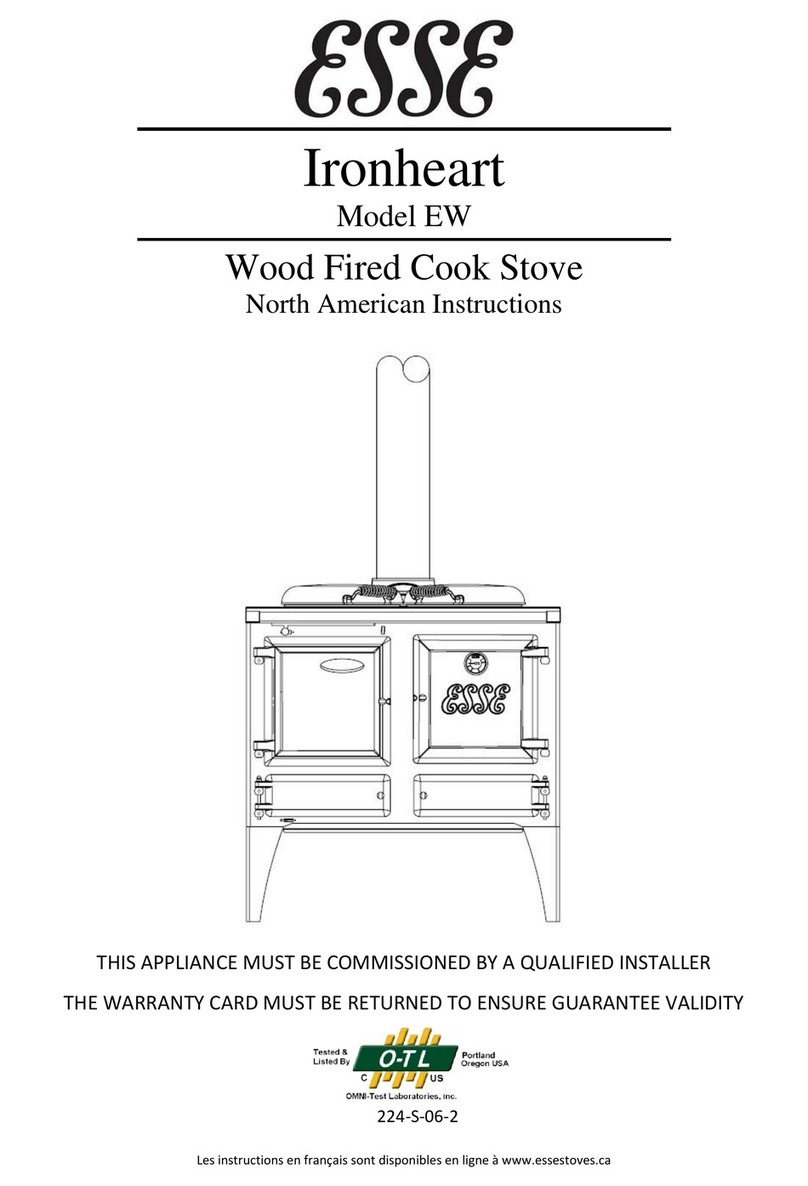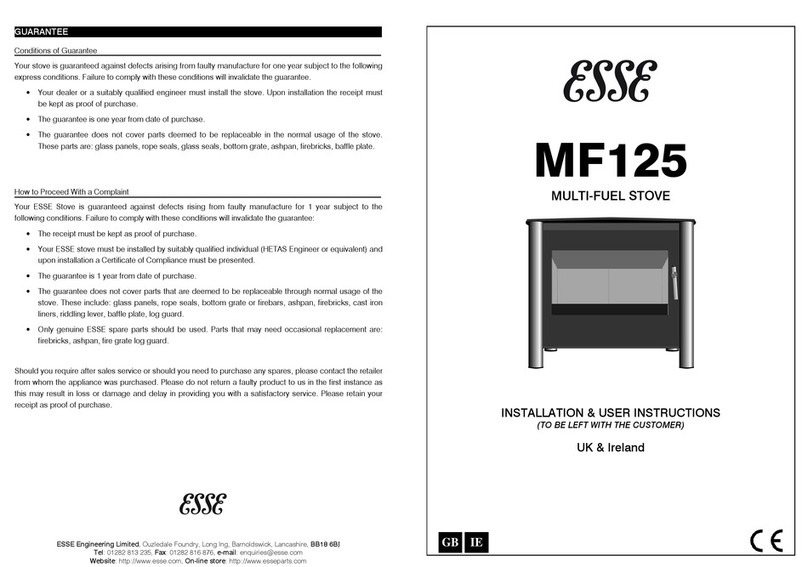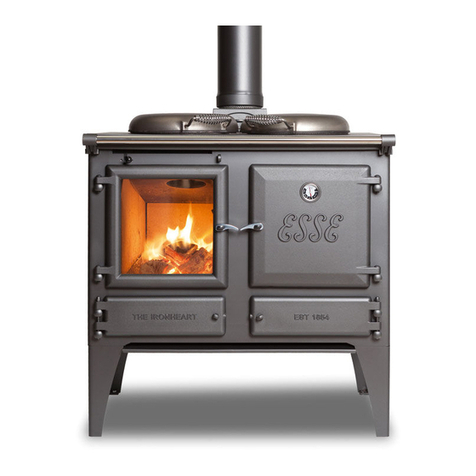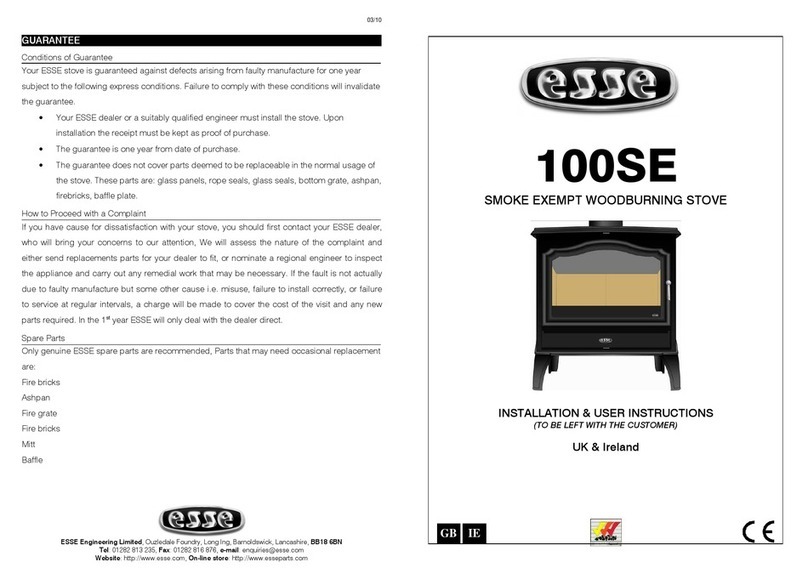
General Safety Notes Page 2 Installing the Stove Page
Installation Instructions Page 3 Operating Instructions Page 8
Chimney & Flue Page 3 Wood Burning Page 8
Flue Draught Page 5 Maintenance Page 11
Flue Stabilizer Page Technical Information Page 11
Dimensions & Clearances Page Guarantee Page 12
•Properly installed, operated and maintained, this appliance will not emit fumes into the
dwelling. However occasional fumes from de-ashing and re-fuelling may occur. Persistent
fume emission is potentially dangerous and must not be tolerated. If fume emission does
persist, open doors and windows to ventilate the room. Let the fire burn out or eject and
safely dispose of fuel from the appliance. Once the fire is cold, check the flue and chimney
for blockages and clean if required. Do not attempt to relight the fire until the cause of the
fume emission has been identified and corrected. Seek expert advice if necessary.
•Do not fit an extractor fan in the same room as the appliance.
•An adequate air supply for combustion and ventilation is required. As this stove does not
exceed 5.0 kW nominal heat output (Refer to Building Regulations Document J) a purpose
provided air vent is not normally required. However, in certain circumstances a purpose
provided air vent may be necessary – for example, small or tightly sealed rooms. Air
openings provided for this purpose must not be restricted.
•It is important that flue ways are cleaned frequently and the chimney swept regularly. Also
the stove must be maintained in good mechanical order. Regular sweeping means at least
once per year for smokeless fuel and a minimum of twice per year for other fuels.
•If the chimney was previously used for an open fire, it is possible that the higher flue gas
temperatures generated by the stove may loosen deposits that were firmly adhering to the
inner surface of the chimney and cause blockage of the fluepipe. We recommend that in
such a situation a second sweeping of the chimney should be carried out within one
month of regular use of the stove after installation. Also, lock or remove any existing
dampers in the flueway.
•Should it be likely that children, aged or infirm people approach the fire, then a fireguard
should be fitted.
•Avoid the use of aerosol sprays in the vicinity of the stove when it is in operation.
•This appliance must be installed as per these instructions and regulations complied with.
No modifications or alterations of any kind are permitted.
CONTENTS
GENER L S FETY NOTES
The installer has a responsibility under the Health and Safety at Work Act 1974 to provide for the
safety of persons carrying out the installation. Attention is drawn to the fact that fire cement is
caustic and hands must be washed thoroughly after use. The appliance is heavy and care must
be taken during handling. Although the appliance does not contain asbestos products, it is
possible that asbestos may be disturbed in existing installations and every precaution must be
taken.
These instructions give a guide for the installation of the appliance but in no way absolves the
installer from responsibilities to confirm to British Standards, in particular BS
BSBS
BS8
88
8303
303303
303 and BS 4
BS 4BS 4
BS 4 1
11
1,
relating to the installation of solid fuel appliances. All local regulations, including those referring
to National and European standards need to be complied with when installing the appliance.
This successful operation of these appliances relies on the adequate performance of the
chimney to which it is connected. The chimney must:
•Have an internal cross section of no less than 320cm
2
(200mm dia). If a flue liner is used it
should be 125mm diameter (5'') and suitable for solid fuel.
•Be a minimum 4. m high from hearth level to pot.
•Be terminated at least 1m above roof level so that the chimney does not terminate in a
pressure zone (see Fig.2).
•Be free from cracks, severe bends, voids and obstructions.
•Be connected to this one appliance only.
•New chimneys must be tested in accordance with HETAS requirements.
•If this stove is installed as a freestanding appliance, it should not support any part of the
chimney.
•Voids in the chimney should be avoided, as these will prevent a steady flue draught.
•The stove flue pipe should pass beyond the narrowing of the chimney (see Fig. 1).
•Consideration should be given to falling soot. For rear outlet stoves it may be necessary to
provide a soot catchment area in the flue pipe so that soot does not settle in the path of
the flue gases. The optional rear flue box attachment available from ESSE has a
detachable base that allows for fallen soot to be removed (see Fig.1).
•A flue/chimney access point may also be required so that the state of the chimney can be
checked and any fallen soot removed.
•External flue must be insulated to prevent heat loss.
INST LL TION INSTRUCTIONS
CHIMNEY & FLUE
Parts of the appliance, especial
ly the external surfaces, will be hot to touch
when in operation and due care will need to be taken.



